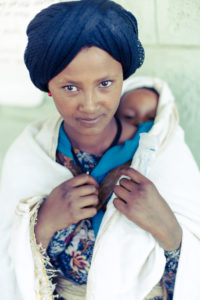By Beth Yeager, Principal Technical Advisor, Management Sciences for Health & Chair, Maternal Health Supplies Caucus, Reproductive Health Supplies Coalition

Nearly three years ago, I blogged about a systems approach to improving access for a Maternal Health Task Force (MHTF) series on maternal health commodities:
Increasing access to essential medicines and supplies for maternal health requires a systems approach that includes: improving governance of pharmaceutical systems, strengthening supply chain management, increasing the availability of information for decision-making, developing appropriate financing strategies and promoting rational use of medicines and supplies.
It was an exciting year for maternal health. The UN Commission on Life-Saving Commodities for Women and Children (UNCoLSC) had just released its report with 10 recommendations for improving access to 13 priority commodities that included 3 for maternal health: oxytocin, misoprostol and magnesium sulfate. The UNCoLSC report also reflected the idea that a systems approach was necessary and included recommendations related to both upstream and downstream supply chain bottlenecks, information, financing and appropriate use. That same year, the Maternal Health Supplies Caucus of the Reproductive Health Supplies Coalition held its first membership meeting in October for the purpose of joining the maternal health and family planning communities to “draw on existing approaches to address the bottlenecks undermining commodity security across health systems.”
Since then, great progress has been made in identifying the bottlenecks to access, raising awareness of the complexity of addressing these challenges and increasing global commitment to ending preventable maternal deaths as part of the post-2015 development agenda.
Improving governance
With respect to governance, through the efforts of the UNCoLSC to promote coordinated national strategies for Reproductive, Maternal, Newborn and Child Health (RMNCH), the need for coordinated planning among all stakeholders, including measures of accountability, has come to the forefront.
Reviewing national policies — such as the essential medicines lists and standard treatment guidelines — and advocating for the inclusion of the three priority maternal health medicines in these policies has raised awareness of both the need to harmonize policies at the national level and the challenges to implementing these policies.
Recognition of the importance of the regulatory role governments play in ensuring the qualityof products in circulation in the public and private sectors has also grown. In a recent studyconducted by the USAID-funded Systems for Improved Access to Pharmaceuticals and Services program (SIAPS) in Bangladesh, we found that over 40% of the oxytocin in circulation at the district level was procured from local wholesalers.
Strengthening supply chain management
In terms of supply chain challenges, resources are now available to assist countries in more accurate forecasting for maternal health medicines. The Estimation of Unmet Medical Need for Essential Maternal Health Medicines developed by SIAPS (a project led by Management Sciences for Health with partners) presents an approach that allows national program managers and other key stakeholders to assess a country’s theoretical need for the three maternal health commodities and compare this with actual procurement data from past years in an effort to make more evidence-based decisions. The RMNCH quantification guidancedeveloped by the Supply Chain Technical Resource Team of the UNCoLSC also includes the three maternal health medicines.
Information for decision making
Over the past three years, we have also learned how little information is readily available about these commodities and the conditions they are meant to treat at the country level. In many cases, logistic management information systems do not capture these three products (and many others necessary for maternal health). Likewise, health information systems do not necessarily capture the number of women who develop post-partum hemorrhage and are successfully treated. Efforts are currently underway in a number of countries to address this problem.
The global community has learned a lot these past three years and made great progress in further revealing the actions required to increase access to quality medicines and supplies for maternal health. With the current proposed target of ending preventable maternal deaths by 2030, global and national stakeholders need to continue their coordinated efforts to build stronger, more responsive systems.
This post originally appeared on the Maternal Health Task Force blog.

